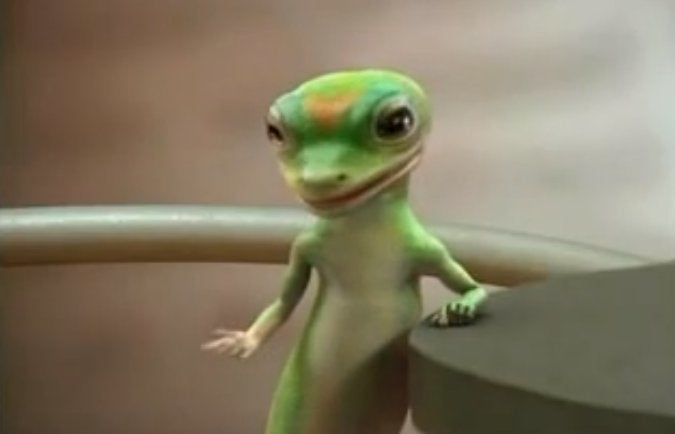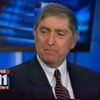
It's been a tough week for spokespeople. Yesterday, Subway and spokesman Jared Fogle announced that they have suspended their relationship pending a child pornography investigation of Russell Taylor, the executive director of Fogel's charity. This comes after news that Bill Cosby admitted, in a deposition, that he obtained drugs "to give to women he wanted to have sex with." Kraft, whose JELLO brand used Cosby as a spokesman, began to distance itself from the entertainer last year after allegations of sexual misconduct were brought to light from at least a dozen women.
When spokespeople are good
Companies use spokespeople to humanize their brands, make their products more relatable, and derive benefit from association with positive name recognition. In the case of Subway, Jared is a real person that lost a lot of weight by eating Subway sandwiches and exercising while he was in college. He personified the healthy and fresh image that Subway wanted to convey. Portraying Dr. Huxstable on The Cosby Show, Cosby was America's father figure - an image with which JELLO, wanted to associate.
When they become nightmares
The downside is when spokespeople's negatives become public and taint the brands with which they are linked. In addition to being associated with "bad things," spokespeople age and eventually die. Lance Armstrong went from big hero to huge liability for sponsors, such as Nike. Interestingly, Nike did not drop Tiger Woods. While he may have cheated on his wife, he never cheated in his sport.
To avoid problems with spokespeople
To mitigate the risks associated with spokespeople, brands often turn to mascots, or spokescreatures. Often based on people, animals, or objects, mascots are branding elements that enable your target audience to better identify, remember, and understand your company and products.
Unlike spokespeople that age, die, have affairs and do other things that can damage your brand, mascots are ageless brand representatives that help your target audience develop a closer relationship with your products. They do not ask for raises, take vacations, or get sick. And, they usually do not get you into trouble. In fact, mascots can actually make money for you when they are sold as collectibles or toys.
Helping to remember the name.
AFLAC began in 1955 as a small family insurance company in Columbus, Georgia. The name is an acronym for American Family Life Assurance Company. It does not roll off the tongue easily or make a very pleasing sound. As a result, the company's target audience was having trouble remembering the name. That is not good for business or for creating a positive word-of-mouth pyramid. People have to be able to remember the name to buy the product and tell others about it.
To solve this problem, they decided to experiment using a duck as a mascot since the brand name sounds like the "quack quack" sound a duck makes. Upon investing in advertising to promote the duck and the business, the result has been phenomenal with name recognition and profits soaring. In fact, name recognition has been at 91% - higher than big insurance companies MetLife or Cigna and in the same ballpark as behemoths McDonald's and Coca Cola. The Aflac duck is its own cost center and all proceeds from the sale of merchandise go to the AFLAC Cancer Center at Children's Hospital in Atlanta.
GEICO, also an acronym for Government Employees Insurance Company, began using the Gecko in TV commercials in 2000. As with AFLAC, the spokescreature was created to get members of the target audience to remember the name of the company.
It is used in combination with the slogan repeated in each TV commercial, "15-minutes could save you 15% or more on car insurance." It worked. In the first two years, subscribers jumped 16.7% and Warren Buffet CEO of Berkshire Hathaway, which owns GEICO, has said that he loves the commercials. Of course, the main reason for his love is the Gecko commercials have brought in a lot more business.
Helping to understand product benefits
The Energizer Bunny was introduced in 1989 TV commercials as the mascot of Energizer Holdings Inc. And, it has kept going and going ever since. It does a great job of positioning Energizer batteries as longer lasting - perhaps the most important benefit to battery consumers. Energizer attributed 7% of its sales rise in 1992 to the bunny.
Snap, Crackle, and Pop are mascots created to reinforce the sound Kellogg's Rice Krispies cereal makes in milk. The benefits these mascots reinforce are freshness and crispiness. They also help to give identity to the cereal that targets young kids.
M&Ms mascots were invented to show the unique benefit that the individual candies "melt in your mouth not in your hands" per their slogan.
What kind of mascots tend to be the most successful
Mascots work together with such other branding elements as names, logos, slogans, and jingles to increase the success of a product or company brand. The ones that tend to be most successful are the ones that help people understand and remember one or more of the following brand elements:
- Name. Jack-in-the Box; M&Ms; Budweiser Frogs.
- Benefit. Mr. Clean; Speedy (Alka Seltzer); Brawny (paper towels); Poppin' Fresh (Pillsbury); Mrs. Butterworth (syrup); Tony the Tiger (they're Grrreat!).
- Product. Michelin Man; Elsie the Cow; Dancing raisins.
- Target audience. Trix rabbit (Trix are for kids); Buster Brown (shoes for kids).
- Relationship. Manny, Moe, and Jack (Pep Boys); Budweiser Clydesdales; Betty Crocker.
In Forbes, Manhasset, New York-based Marketing Evaluations shares the results of their research that identified America's 10 "most-loved spokescreatures."
While many companies do not break out specific ROI data, the product brands represented by these mascots have been very successful, in no small part, due to the introduction of these spokescreatures.
While less likely, mascots can get you in trouble too
Of course, mascots are not immune from getting you into trouble. Mascots that some American Indians believe are offensive are creating image problems for the Washington Redskins and 450 other brands. Even the AFLAC duck had issues when its voice, Gilbert Gottfried, was terminated after his tweets relating to the earthquake and tsunami in 2011 were deemed offensive rather than funny. The lesson is to be very careful in selecting spokespeople, spokescreatures and voices that represent your brand. Spokescreatures can be far more beneficial and far less risky, damaging, and costly than their spokespeople counterparts. Best of luck.
